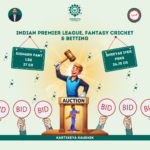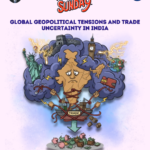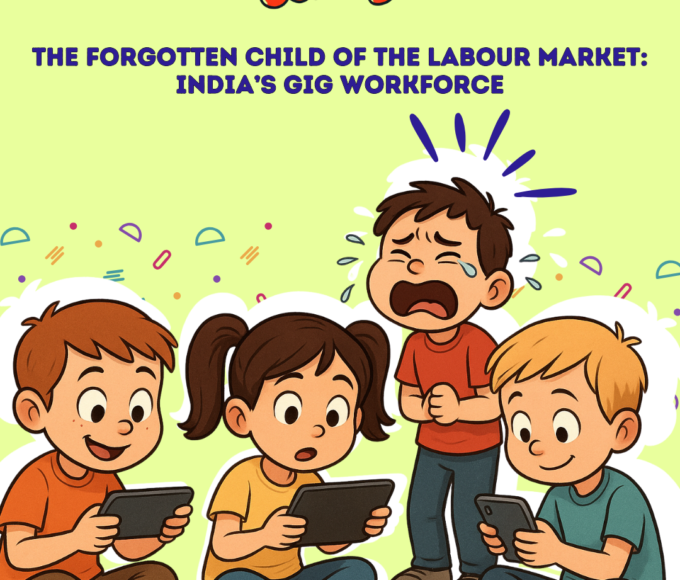
What is the most nostalgic memory you have of your childhood? Playing in the sun with your friends, pretending to be sick to avoid going to school, the terror of not having homework to present to the scariest teacher, or playing your favorite videogame. Over the years as we have grown up, have we given serious thought to this juvenile issue? What are video games? And how is it that, unlike most fads of the past, this industry still exists and grows?
The gaming industry took its roots in the United States with Atari’s ‘Pong’. Atari was a company started by two employees of an electronics company, Ampex. They were Nolan Bushnell and Ted Dabney. They created ‘Pong’, a table tennis video game that was released in 1972. It was played in an arcade format, showing a pixelated table, a ball, and two paddles. The game was a sensation and a paving path for other companies such as Taito and Sega. It also helped Atari with the launch of the first-ever home console, the Atari 2600 in 1977 which sold a million units. But it was the Japanese Taito’s creation of ‘Space Invaders’ in 1978 that truly kicked off the gaming Industry.
- Asteroids (Atari, 1979)
- Galaxian (Namco, 1979)
- Berzerk (Stern Electronics, 1980)
- Missile Command (Atari, 1980)
- Pac-Man (Namco, 1980)
- Rally-X (Namco, 1980)
- Centipede (Atari, 1981)
- Defender (Williams Electronics, 1981)
- Donkey Kong (Nintendo, 1981)
- Frogger (Konami, 1981)
- Scramble (Konami, 1981)
- Zaxxon (Sega, 1981)

But who was making these games?
While Atari was making the hardware, game development began with Taito and Sega. Without these companies, gaming would not be a reality today. The best example of in-house game development is Nintendo, with stalwarts such as Donkey Kong, Super Mario, Pokémon, and Zelda in its library. Sega created waves with Sonic and Zaxxon.
And who can forget the original fighter games that sparked controversy for being too violent? Mortal Kombat, by Midway Games, was bought by Warner Bros. under Netherrealm Studios.
These were all the notable games released in arcade format. Together they made a revenue of around $8.5 billion USD. But the arcade games were a dying breed. To avoid death Atari started to capitalize on the home console market. Game development companies had to release their games somewhere. The models of the Atari 2600 and the later home console (Atari 7800, 1986) were on the way. These consoles worked on cartridges that contained the game. Atari seeing an excellent business opportunity rushed extremely high-budget ports of Pac-Man and E.T. the Extra-Terrestrial. This led to poor-quality games being published which brought the company to bankruptcy in 2013 after failing to make a profit since 1999.


At this time, the true game changer arrived on the scene. The Japanese playing cards maker Nintendo launched the Nintendo Entertainment System (NES) in 1985. The games that were released on these were the popular Donkey Kong and Super Mario Bros. Nintendo achieved great success.
Seeing this success Nintendo’s two greatest rivals came onto the scene. Sony and Microsoft i.e., PlayStation and Xbox.
PlayStation1 vs Nintendo 64
Launch dates
Ps1: December 3, 1994
Nintendo 64: June 23, 1996
Sega Saturn: November 22, 1994
The PlayStation 1 was by far the leader in the market. Its sales figures which stood at 102.49 million units dwarfed Nintendo 64’s 20.63 million units. Meanwhile, Sega was fighting a losing battle against the two giants. The reason for this was the business decisions taken by Sony and Nintendo. While the PlayStation could hold more data in the cheaper CDs, Nintendo’s expensive cartridges held less. Moreover, Nintendo was the better console given its superior graphics and lesser loading time, but PlayStation 1 also boasted more titles since game developers focused more on where the money was.

PlayStation2 vs Game Cube vs Xbox Original
Launch Dates
Ps2: March 4, 2000
Xbox: November 15, 2001
Game Cube: September 14, 2001
DreamCast: November 27, 1998
Sony continued its dominance in this generation as well. It sold a whopping 150 million units that crushed its competition. The new entrant Microsoft sold 24 million units with Nintendo lagging behind with 21.74 million units. Sega was knocked out of the competition as it closed down operations soon after the launch of Dreamcast.
The main reason for Sony’s success was its brand image. Third-party game developers released their games on PlayStation. Moreover, Sony also boasted a larger variety of games for older consumers such as Final Fantasy X, GTA III, and Metal Gear Solid 2. Another factor that helped Sony was backward compatibility with Ps1 games.
Microsoft gained traction and a larger market share than Nintendo due to a unique differentiating factor. Microsoft started Xbox Live an online service that also boasted online games. Something that none of its competitors had. Furthermore, let us not forget Microsoft’s premium game Halo 2.
Game Cube was lagging behind its competitors because of its wrong marketing strategy. Nintendo was a family-friendly company with games that emulated that characteristic. The sixth generation that GameCube belonged to demanded more mature content. But Nintendo on the other hand also had more first-party game releases than all three of its competitors.

PlayStation3 vs Wii vs Xbox 360
Launch Dates
Ps3: November 11, 2006
Wii: November 19, 2006
Xbox 360: November 22, 2005
The seventh generation of gaming consoles was a turning point for Nintendo and an eye-opener for Sony. After finding its target market Nintendo managed to capture the market share by selling 101.15 million units. Sony lagged behind at 80 million units. While Microsoft took over by selling 84 million units. Sony lost this fight because Nintendo found a market for casual gamers that found the new Wii interactive interface fascinating, meanwhile, the hardcore gamers shifted to Xbox owing to shooter titles such as Halo and Gears of War. Moreover, Sony did not have any backward compatibility with its successful predecessor, unlike Xbox. These major reasons contributed to Sony losing this console fight.
PlayStation 4 vs Nintendo Switch vs Xbox One
Launch Dates
Ps4: November 15,2013
Switch: March 3, 2017
Xbox One: November 22, 2013
Sony in this fight regained its throne right at the top of the console market. They managed to sell 117.2 million units which outshone Microsoft’s 58.6 million units. Nintendo cannot be considered a fair competitor as it released the Switch which was a handheld-cum-home console. Nintendo continued to draw consumers through its family-friendly approach with games like Legend of Zelda: Breath of the Wild, Mario Kart 8 Deluxe, Super Mario Odyssey, and Animal Crossing: New Horizons.
Another reason for Nintendo’s success was that it continued its tradition of motion gaming from Wii, where its JoyCons could work as motion controllers. This was a concept that both Sony and Microsoft did away with. Sony and Microsoft had similar offerings such as Xbox Game Pass and PlayStation Plus, graphics, processing speed, etc. But Microsoft failed in its first-party games. Both Microsoft and Sony had over 2000 games in their libraries, of which 299 were exclusively for PlayStation while less than 150 were for Xbox. This made Ps4 the superior console for hardcore gamers.

But now times have changed. There are new segues that are been established in the gaming industry. Gamers’ spending habits have shifted. Mobile gaming is now on the rise.

Gamers’ Spending Habits
Ever since the advent of online gaming, companies have found a new revenue source. Unlike the previous model where consumers would buy a video game and play it, now they can buy items to use in the game that can be bought with real money. Examples of these are DLCs and in-game purchases.
Here are the highest-grossing DLCs of all time:
1) Call of Duty Black Ops Cold War: The amount spent up till now is incalculable.
2) Entropia Universe: This was a game that was released in 2003 that is still relevant. The game had its own currency (PED – Project Entropia Dollars) that had a fixed exchange rate of 10:1 with USD. The total amount spent till now has been $6,000,000 while the single largest transaction in the game amounted to $635,000.
3) Curiosity: What’s Inside the Cube: More than $60,000.

The gaming industry is fuelled by consumers’ compulsive spending habits. It is due to these reasons that the industry is now a $21 billion industry. According to research, people who suffer from mental sicknesses such as depression, isolation from society, and extreme introversion are prone to compulsive buying. These consumers use gaming in the virtual world as an escape from reality. Hence they provide a necessary impetus to game development companies.

Mobile gaming
Game developers have not stressed enough that mobile gaming is a new avenue for an excellent revenue stream. Mobile game developers also make billions in revenue like their console and pc counterparts. According to statistics in 2021 mobile gamer spending reached $116 billion. $16 billion more than in 2020. It is also expected to reach $138 billion by 2035.
Furthermore, by 2025, 58% of the App Store’s revenue is projected to come from non-gaming apps and 42% from gaming apps, and 71% of Google Play’s revenue is estimated to come from mobile games in 2025

The gaming world has come a long way from its pixelated days in the arcade. Today it’s neither a children’s pastime nor a family’s means of entertainment. It’s now a billion-dollar industry that is growing at a steady pace. We now have that e-sports where participants compete with their skills for certain games. Adults from the age of 25 to 40 play video games and stream them live as a source of revenue. Video games have even given rise to Metaverse a concept that might be the new way of living for future generations. But is it all good given the fact that certain violent video games have also been the cause of violent tendencies in young minds or the cause of isolation and depression among the youth? It is to be seen what this industry has in store for us and where it will end up.
References
Piotr Dziwinski, 2019, Managing intangible assets in the gaming industry enterprise, Scientific papers of the Silesian university of technology 2019 organization and management series no. 137,
Lisa Goh, Kevin C.K. Lam, Hong Weng Lawrence Lei, Value Relevance of Financial and Non-Financial Information: Evidence from the Gaming Industry, UNLV Gaming Research & Review Journal, Volume 23 Issue 1
Omri Wallach, November 27, 2020, The history of the gaming industry in one chart, World Economic Forum, https://www.weforum.org/agenda/2020/11/gaming-games-consels-xbox-play-station-fun/#:~:text=Early%20prototypes%20of%20video%20games,their%20own%20knock%2Doff%20versions.
Mike Minotti, August 20, 2014, Here’s who won each Console War, Games Beat Summit, https://venturebeat.com/games/heres-who-won-each-console-war/
-TJEF Editor
-Denver Roberts




















Leave a comment